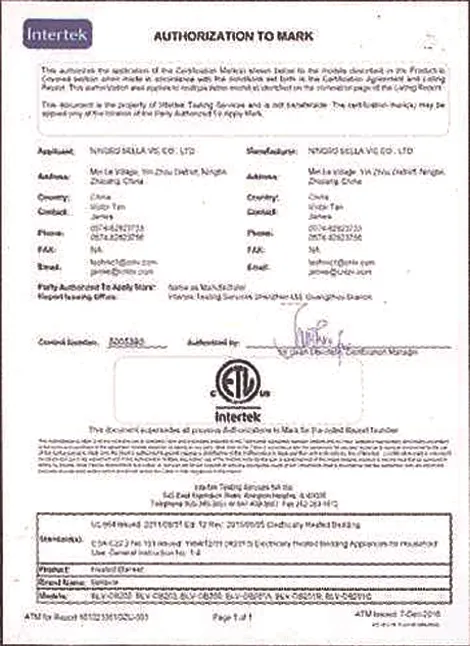Oct . 02, 2024 05:40 Back to list
Understanding the Energy Consumption of Electric Blankets in Kilowatt Hours
Understanding the Energy Consumption of Electric Blankets A Guide to kWh Usage
Electric blankets have become a popular item in many households, especially during the colder months. They provide warmth and comfort, allowing users to enjoy a cozy sleep while saving on heating bills. However, an important aspect that consumers often overlook is the energy consumption of these blankets, expressed in kilowatt-hours (kWh). Understanding kWh usage is essential for budgeting electricity costs and ensuring the efficient use of energy.
What is kWh?
Kilowatt-hours (kWh) is a unit of energy measurement commonly used by utility companies to bill consumers for electricity usage. One kWh represents the amount of energy consumed by a device that uses one kilowatt (1,000 watts) over the course of one hour. For example, if you have an electric blanket rated at 100 watts and you use it for 10 hours, it would consume 1 kWh of electricity (100 watts x 10 hours = 1,000 watt-hours, or 1 kWh).
How Much Power Does an Electric Blanket Use?
The power rating of electric blankets varies significantly based on make and model, but most typically range from 60 watts to 200 watts. For instance, a standard electric blanket rated at 100 watts would consume 0.1 kWh for each hour of use. This means if you keep the blanket on for 8 hours during the night, the total consumption would be 0.8 kWh.
Let’s consider another example if you utilize a higher-wattage electric blanket rated at 150 watts for 6 hours, the calculation would be as follows
- Power consumption 150 watts = 0.15 kWh per hour - Total energy used in 6 hours = 0.15 kWh x 6 hours = 0.9 kWh
This shows that the total energy consumption can vary widely depending on the blanket’s wattage and how long it’s used.
Cost Implications
To determine the cost of running an electric blanket, multiply the kWh consumed by your utility rate. For example, if your electric rate is $0.12 per kWh, and you use an electric blanket that consumes 0.8 kWh nightly, your monthly costs would be
electric blanket kwh

- Daily cost = 0.8 kWh x $0.12 = $0.096 - Monthly cost (for 30 days) = $0.096 x 30 = $2.88
Therefore, using an electric blanket could potentially be a cost-effective alternative to heating your entire home while still providing warmth where it's needed most
.Efficiency and Usage Tips
To maximize energy efficiency while using electric blankets, consider the following tips
1. Preheat and Unplug Use the blanket to preheat the bed before you sleep and then unplug it to avoid unnecessary energy consumption throughout the night.
2. Lower Settings If possible, use a lower heat setting. Many modern electric blankets come with adjustable settings—using a lower setting can save energy while still keeping you warm.
3. Use in conjunction with Regular Blankets Layering your electric blanket with regular bedding can provide additional warmth, allowing you to use it less intensively.
4. Time Your Usage Consider turning on the blanket an hour before bedtime instead of keeping it on throughout the night. This can help reduce overall kWh usage.
5. Regular Maintenance Ensure the blanket is in good condition and check the power cord for any damage as this can affect performance and efficiency.
Conclusion
Understanding the kWh consumption of electric blankets is an essential part of managing energy use in the home. With the right knowledge of wattage and smart usage practices, electric blankets can provide warmth and comfort inexpensively while minimizing overall energy costs. As energy prices continue to fluctuate, being informed about the devices we use and their energy footprints can lead to more economical and sustainable choices in our daily lives.
-
Keep Your Furry Friends Warm with Our Pet Electric Blankets
Aug.07,2025
-
Keep Your Furry Friends Cozy with a Pet Heating Blanket
Aug.07,2025
-
Heated Mattress Blankets
Aug.07,2025
-
Experience Unmatched Comfort with Electric Blanket Double
Aug.07,2025
-
Warm Winter: The Perfect Choice For A Cozy Electric Blanket
Aug.07,2025
-
Discover the Comfort of Heating Pads for Relief and Relaxation
Aug.07,2025
Realted Products




